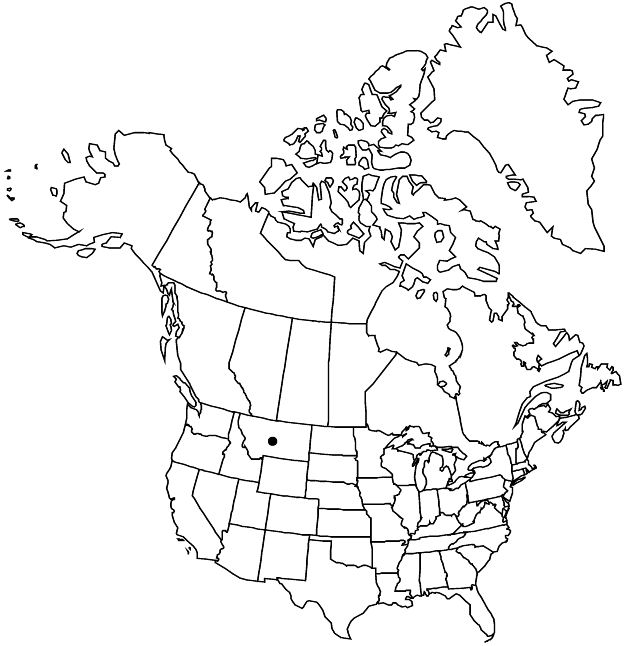Crataegus williamsii
Bull. Torrey Bot. Club 36: 641. 1909.
Shrubs, 40–60 (–100) dm. Stems: expanding bud-scales conspicuous, coral red; twigs: new growth glabrous, 1-year old deep reddish-brown; thorns on twigs ± straight to slightly recurved, black, sometimes dark purple young, older paler, shiny, ± slender, 3–4 cm. Leaves: petiole 2–3 cm, ± hairy, eglandular or glandular; blade rhombic to elliptic, 4–6 cm, thin, base cuneate, lobes 2 or 3 per side, short, lobe apex acute, margins ± evenly sharp-serrate except at base, teeth ± inconspicuously gland-tipped, veins 4 or 5 (or 6) per side, apex acute, abaxial surface glabrous, veins hairy, adaxial shortly and densely appressed-hairy. Inflorescences 8–20-flowered; branches sparsely villous; bracteole margins sessile-glandular. Flowers 16 mm diam.; hypanthium glabrous or densely villous externally; sepals ± narrowly triangular, 4–7 mm, margins finely glandular-serrate, abaxially glabrous; stamens 10, anthers pink; styles 3 or 4 (or 5). Pomes usually pale-red young, bright red (late Aug), deepening to oxblood red or darker mature (Sep), usually short-ellipsoid, 8 mm diam., longer than wide, sparsely villous; sepals not thickened or enlarged, spreading to reflexed, narrow, 4–7 mm; pyrenes 3 or 4 (or 5), sides variably pitted.
Phenology: Flowering May–Jun; fruiting Sep–Oct.
Habitat: Scrub
Elevation: 700–1000 m
Discussion
Crataegus williamsii occurs in the Clark Fork and Flathead drainage basins of northwestern Montana; possible records for Idaho require more study. The species is notable for its extremely late anthesis, after sympatric C. macracantha; it is the last hawthorn to flower in its area of occurrence. The immature fruit is bright red, in contrast to its later duller color. The fall color of the foliage is predominantly crimson burgundy or a pallid version thereof. Crataegus williamsii is the most distinct member of ser. Purpureofructus because of its relatively small and delicate, spreading to reflexed fruiting sepals (versus accrescent, long, erect-patent) and its lack of purple to black colored, fully mature fruit. See also comments under 26. C. macracantha.
Selected References
None.
Lower Taxa
"thin" is not a number."thick" is not a number."adnate" is not a number."dm" is not declared as a valid unit of measurement for this property.
